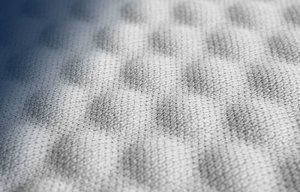
Wetlaid nonwovens to dominate battery separators market
Fifty new lines to be installed in China in 2021-22 and thirty in Turkey over the same time period.

9th August 2021
Innovation in Textiles
|
Akron, OH, USA
The global market for spunlace nonwovens will reach $7.8 billion in 2021 as new wipes production lines are added to respond to the surge in demand caused by Covid-19.
This will see installed capacity climb to 2.62 million tons in 2021 according to the latest market survey from Smithers, The Future of Spunlace Nonwovens to 2026.
The report’s analysis shows that enhanced concerns over infection control will help spunlace production resist any recessionary downturn, with an impressive 9.1% compound annual growth rate (CAGR) forecast for 2021-2026. This will push total market value to $12.04 billion in 2026, as producers also benefit from wider use in coating substrates and hygiene applications.
Over the same time period the total tonnage of spunlace nonwovens will rise from 1.65 million tons in 2021 to 2.38 million tons in 2026 and volume will rise from 39.57 billion square metres in 2021 to 62.49 billion square metres 2026 – a CAGR of 9.6% as manufacturers introduce lighter base weight nonwovens.
The majority of growth will come from Asia, with China alone set to install around 50 new lines in 2021-2022. Closer to Europe, up to 30 new spunlace lines are planned for Turkey over the same time period.
Over the forecast period, card-card (CC) will remain the dominant spunlace process. It has a 75.6% market share by volume in 2021 that will not diminish significantly. There will be increased demand for wetlaid spunlace (WLS) over the next five years, while the market shares for card/pulp/card (CPC) and spunbond/pulp (SP) spunlace variants will decline. Sustainability concerns will lead to nascent card/airlaid/card (CAC) spunlace technology having the fastest growth rate, with worldwide consumption more than quadrupling over the study period.
Wipes (baby care, home care, industrial, personal care) account for around 64.7% of all spunlace media produced in 2021. Through to 2026, the fastest growth rates are forecast for personal care wipes, and adult and toddler moist toilet tissue (MTT). There will also be new market opportunities in consumer hygiene with spunlace presenting a sustainable alternative to competing polyester or polypropylene-based nonwovens in applications such as ultrathin topsheets for feminine hygiene pads.
As the imminent threat of Covid-19 recedes, the leading transformative trend across the first half of 2020s will be developing more sustainable nonwovens.
Generally this will advantage spunlace producers, as they work towards the goal of developing a fully plastics-free wipe. This driver will continue to receive a stimulus from the EU’s Single-use Plastics Directive and restrictive legislation planned elsewhere.
There is also strong interest from brand owners in polymer-free wipes that can be marketed as premium eco-friendly products. The main route to achieve this is the wider use of rayon, lyocell, wood pulp, cotton and other biodegradable fibres, with a corresponding relative decrease in the use of spunbond polypropylene and polypropylene fibre.

Business intelligence for the fibre, textiles and apparel industries: technologies, innovations, markets, investments, trade policy, sourcing, strategy...
Find out more